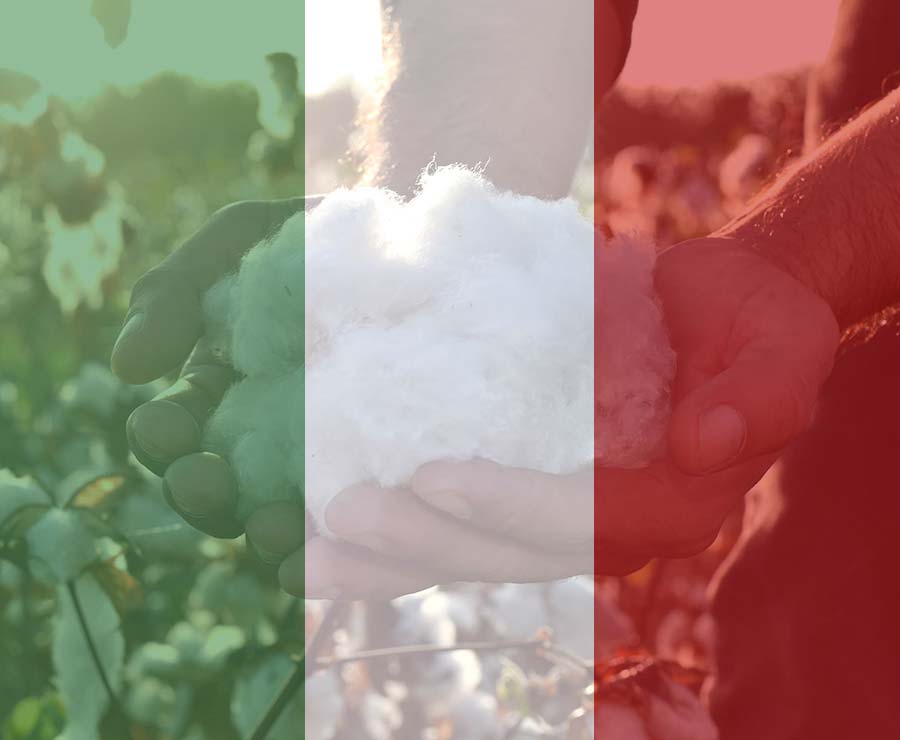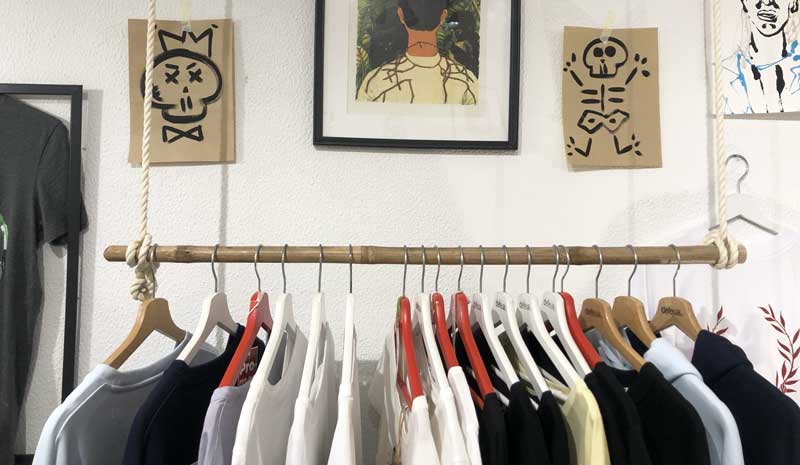
Organic cotton is now Italian!
Luca BensiDid you know that the cotton you find inside your clothes usually doesn't come from Italy?
The largest cotton growers and producers in the world are: India, USA, Egypt, Bangladesh, China, Kyrgyzstan, Turkey and in Europe Greece, Spain and Bulgaria.
What if I told you that organic cotton is also grown in Italy today?
It seems like science fiction, although it would be better to say that cotton " returns" to being grown in Italy.
A SHORT HISTORY

Photo credit: gelaleradicidelfuturo.com (photo by E.Sala)
Until the 1960s, cotton was grown in southern Italy.
Cultivation was subsequently abandoned due to the widespread diffusion of synthetic fibres, which were certainly cheaper and therefore more profitable.
A key reason that has influenced the textile industry, up until today.
In recent years, we have finally become aware of the negative impact that synthetic fibers have on everyday life.
Information on the importance of more sustainable fashion is increasingly widespread and people are becoming more and more aware of the topic (we are very proud to have contributed to this change of perspective since 2016) .
Greater attention from the end customer has led to a greater demand for sustainable fibres.
The long-term consequence that is emerging is that governments, brands and the textile industry are finally forced to adapt to this new interest.
Also in Italy!
ITALIAN PROJECTS

The GEST group and Albini - Photo credit: ilsipontino.net
In the last 2 years, the cultivation of organic cotton has also begun in Italy, through a system that follows the natural agricultural rotation of the soil and which optimizes the use of water to avoid wasting resources.
The company that first developed and brought this project to completion is Pietro Gentile and Michele Steduto 's GEST , an Apulian company that had the courage and determination to take a revolutionary path, finding fundamental support in the Albini textile group .
Organic cotton is currently grown in Puglia and Sicily , ideal environments for the plant, covering an area of approximately 300 hectares.
There is also a project at European level, Apulia Regenerative Cotton Project , which also involves the Armani group and other entities such as the S network ustainable Markets Initiative launched by King Charles III of England in 2021.
A pilot project that aims to develop one of the first experimental cotton fields in Italy according to the regenerative and agroforestry cultivation system.
Advantages and disadvantages
In addition to the already known advantages of organic cotton compared to standard cotton (which we have already told you about in this article ) , having a totally Italian cultivation of the plant would bring further advantages and some disadvantages.
I'll list them here, promising to update them over time.
ADVANTAGES
- the possibility of having 100% Made in Italy production
- complete traceability and easier to control for Italian companies
- a new possibility for the development of the Italian textile industry, without necessarily relying only on imports from abroad.
DISADVANTAGES
- the cost of cultivation is higher which consequently affects the entire supply chain (up to the final consumer)
- at least initially the use of Italian organic cotton could be economically sustainable only for luxury brands
- the relatively limited collection (but which for now manages to satisfy the demand)
I always have this feeling that truly sustainable fashion and the dream of a totally Italian short supply chain remain a luxury that few (both among brands and end consumers) will be able to afford
However, I like to always see the glass half full, and I still consider this step the beginning of a new beautiful path!
What if it also involves Defeua in the future?

